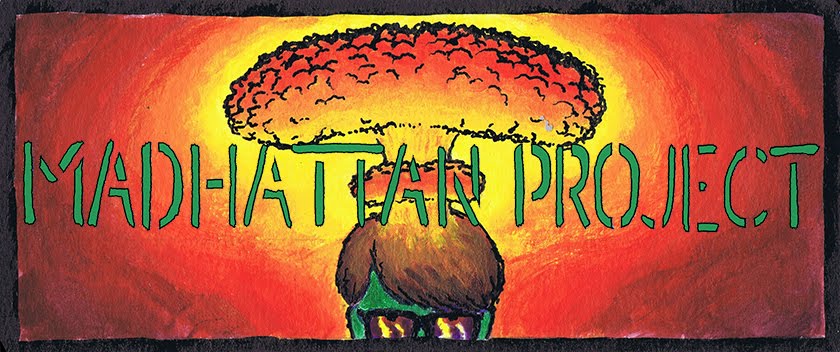On Monday I put forward some pretty big questions as inspired by a dear friend.
Because her initial thoughts were brought about by our being hip deep in geriatric Greekery, I dove into the early history of Western translation theory, using Aristotle as an example. Since you’re one of my beloved and diligent readers, you’ll also remember that I spent a lot of time explaining that by the time Aristotle made it to the academic consciousness of Western Europe in the thirteenth century, it was more than likely already translated once, from one dialect of Greek to another.
So?
So, those already distrustful of translation as a rule already have cause for concern. And it gets worse from there. See, a translation isn’t a copy. We’re not dealing with a decay of fidelity like you are with a Xerox machine where a duplication of a duplication is how things fall apart, especially because we’re not dealing with metaphrasic translation (word-for-word).
There’s no visual comparison here, images are not ideas, excuse me, they absolutely are, but they transcend language barriers so they don’t have this issue (don’t they? Foreshadowing!). It only takes one translation to completely change a text. Subsequent translations don’t detach further from the source, rather they can, but if you’re taking an anti-translation stance, it only takes one to blow it, especially because we’re dealing with works out of antiquity as our example, the inexorable march of time juxtaposed with Europe’s favorite hobby (conquering itself and burning shit) is really rough on the paperwork.
See, a lot of old Greek documents ended up as a sort of academic ground zero for Europe, and an arbitrary one at that. Between guys like Socrates, Plato, Homer, and Aristotle, they already were destined to have a big, swinging dick in Europe intellectual development.

As if that weren’t enough, there’s the whole Bible thing. At some point in the first century AD, (I was raised too catholic to adopt CE, sorry), the Old and New Testaments, the latter being fat as hell until an hombre named Athenasius dropped the hammer two hundred years later and limited it to the twenty-seven canonical books we pretend to have read and eagerly misquote to this day, were translated into Greek. Until a further hundred years or so after Bishop Athenasius made his call and Saint Jerome of Illyria translated his Vulgate (the Latin biblical source text invoked to this day as the source), this was the Bible that took Western Europe by storm.
So, essentially the source of our secular and non-secular ideologies came from the same spot, albeit untethered from each other, historically speaking. My layman’s guess would be the latter half has more to do with geography than anything else, but that’s neither here nor there (pun!) at the moment. Anyway, the convergence of these two major cultural influences, compounded by the lacking original documents, means that in a lot of ways these Greek works, as the oldest examples we’ve got, translations or not, become the arbitrary official works.
Nobody had Aristotle’s original manuscripts. The oldest known copies of his work date back to around the ninth century, AD, for those not good with math, this is over twelve hundred years past his earthly demise.
So!
If you’re going to bestow reverence on a text, be it purely as a work of genius or divine offering, and you don’t have the original, you have to at least unofficially declare a point of origin, which is what Europe sort of did.
Except, as I mentioned, it only takes once to “screw up” a document. Especially because, for all we know, the guys that translated The Bible and Aristotle’s stuff into then-modern, Attic-Ionic Greek were problem drinkers with mischievous agendas (or illiterate and screaming what they read from the bottom of a bucket to their put-upon family after a devastating goat-kick to the face. We can all guess as to why.)
So, why bother? What’s the point? I mean, really, if you can’t trust any translation, especially translation from antiquity, is there any point?
Remember that “no dark ages” gag from last time? The ideas never really died, nor are ideas ever really static, even, to the chagrin of literalists, ecumenical ideas.
Even when things are at their bleakest, there are still people thinking, reading, and writing. Sure, you have texts that are lost for centuries, but they rarely return to prominence. The stuff that really made a splash, stuff like Corpus Aristotle? None of it ever went away and you can be sure that folks were watchdogging (and bitching incessantly) about translation and interpretation the entire time. Academics in the third century are academics in the eighth century, are academics in the seventeenth century are academics in the twenty-first century.
Think about professors you had, the ones that are truly dedicated to scholarship, the ones that don’t complain about publishing but see it as the most important part of their job (the ones I’m complementing right now but won’t read it because they’re far too busy and they’ve had enough of me and my nonsense by now).
These people have always been around and they have always been crawling up each others’ asses.
Which takes us to Martin Luther and why he thinks translation, up to and including deliberate re-wording for the purposes of maximizing communicability for the target audience, isn’t just acceptable, it is the solemn duty of a translator.
A quick digression: I love Martin Luther. I really do. Thomas More, too. Thundering intellects and bitter ideological rivals, they are my favorite geeks of all time.

Solemn and sincere men of heart breaking contemplation, men of the God they shared, they probably considered strangulation as a means to win their ongoing epistemological (fancy word for letter writin’) feud, although More probably had a horrible attack of conscience for thinking it, it was his way. I’ll probably write an entire post on them at some point, likely when I start a week long thing on why science fiction is a genre that, much like the Wu-tang Clan, shan’t be fucked with.
Okay, back on track.
Martin Luther had very, ahem, stern and pointed, thoughts on translation, specifically his translation of The Bible.
He said, in an open letter in 1530:
“I know very well that in Romans 3 the word solum is not in the Greek or Latin text — the papists did not have to teach me that. It is fact that the letters s-o-l-a are not there. And these blockheads stare at them like cows at a new gate, while at the same time they do not recognize that it conveys the sense of the text -- if the translation is to be clear and vigorous [klar und gewaltiglich], it belongs there. I wanted to speak German, not Latin or Greek, since it was German I had set about to speak in the translation. But it is the nature of our language that in speaking about two things, one which is affirmed, the other denied, we use the word allein [only] along with the word nicht [not] or kein [no]. For example, we say "the farmer brings allein grain andkein money"; or "No, I really have nicht money, but allein grain"; I have allein eaten and nicht yet drunk"; "Did you write it allein and nicht read it over?" There are countless cases like this in daily usage.”
Or, put another way:

We both know you skipped that block quote. Go back and re-read it, I’ll wait. Seriously, it’s good stuff. Luther goes bananas and starts name calling.
Back? Great.
Luther’s point is worth considering and it sits at the base of paraphrasic (idea-based) translation. Language informs psychology of a people and vice versa, Cicero knew this too, which is why he threw a Patrician screaming fit of his own at what he considered the foolishness of metaphrasic word-for-word translation. See, paraphrasic translation demands that someone shoulder the burden of interpretation. Luther saw it as a responsibility, one with ethical obligations. And sure, he had his own political agenda and he couldn’t help but let his own philosophical leanings influence the work, but he felt translation was about accessibility, and he seemed to embrace the idea that metaphrasic (word-for-word) translation, would lead to more interpretation, not less, ironically working as a stopgap against something that was already a hot button issue at a time when the bible was read and interpreted to people, not by people, that the text itself was too dangerous to be in the minds of laymen. He goes as far as openly and aggressively challenging subsequent independent translations of scripture into German to get the conversation started, something that, as he called them, “jackass papists” could not stomach.
Okay, I hate to stop there, but I’ve gone on long enough for today. Next time we’re going to get into some side by side examples, the influence of source, and as you can probably guess, the further validity or invalidity of translated works.


























